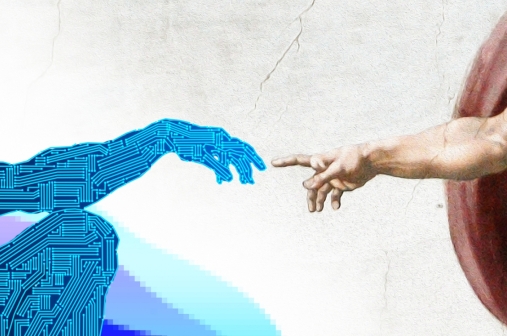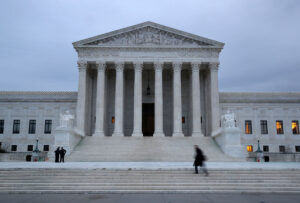Embracing AI in Worship: A Finnish Church’s Innovative Approach

The use of artificial intelligence (AI) is rapidly expanding into various sectors, including religious practice. St Paul’s Church in Helsinki, Finland, recently held an AI-driven worship service, marking a new chapter in the church’s history of integrating technology into its ministry.
Located in the Vallila neighborhood, St Paul’s Church attracted over 120 attendees to this experimental service, many of whom traveled from different areas, intrigued by this unique spiritual experience. The congregation includes a mix of locals and international visitors, drawn by the novelty of AI in worship.
Known for its innovative approaches, the church has previously incorporated unconventional elements like sports screenings and cultural festivals into its services. Inspired by a conference on AI and religion, Rev Petja Kopperoinen, along with Rev Kari Kanala and Bishop Teemu Laajasalo, decided to explore AI’s potential in conducting a service.
Rev Kopperoinen stated, “Usually when people talk about AI, they are talking about what AI can do in the future. But the future is now … AI can do all those things that people think that it can maybe do in 10 years or so.”
AI tools were employed to compose hymns and write sermons, while avatars, including one of former Finnish President Urho Kekkonen, were created to participate in the service. This innovative use of technology extended to a dramatized dialogue between Satan and Jesus. Rev Kopperoinen described seeing his AI-created avatar as “eerie”.
Despite the technological elements, human clergy and worshippers contributed through live organ music and hymn singing. While the experimental service was well-received, some attendees noted a lack of personal connection.
“It was pretty entertaining and fun, but it didn’t feel like a Mass or a service…It felt distant. I didn’t feel like they were talking to me,” shared Taru Nieminen with The Associated Press.
Rev Kanala echoed this sentiment, emphasizing, “The warmth of the people is what people need.” Many attendees found the AI’s speech patterns difficult to follow and felt it lacked the spiritual depth inherent in human interaction.
Jeera Pulkkinen, a student, remarked, “I did like the songs. They were really catchy, although they lacked the kind of soul the humans have.”
Rev Kopperoinen believes AI cannot replace human involvement in religious services due to its inability to provide empathetic and spiritually meaningful interactions.
“It can’t be empathetic towards people. AI can’t really answer your questions in a spiritual way,” he said.
Clear boundaries were set by Rev Kopperoinen, excluding AI from participating in sacred rites such as the forgiveness of sins or the Eucharist. He acknowledged the need for human oversight in content creation to prevent the dissemination of false or harmful information.
Concerns about the ethical implications of AI, especially its environmental impact due to high energy and water consumption, were also raised by church members.
Tom Stoneham, a philosophy professor at the University of York and an ethicist, believes AI can only substitute humans “where the function of the human is purely instrumental,” noting that in religious contexts, “It’s that humanity that is adding value to the situation.”
Anna Puzio, an ethics of technology researcher at the University of Twente, emphasizes the importance of church involvement in AI development to ensure responsible design and application.
This article was originally written by www.christiantoday.com






